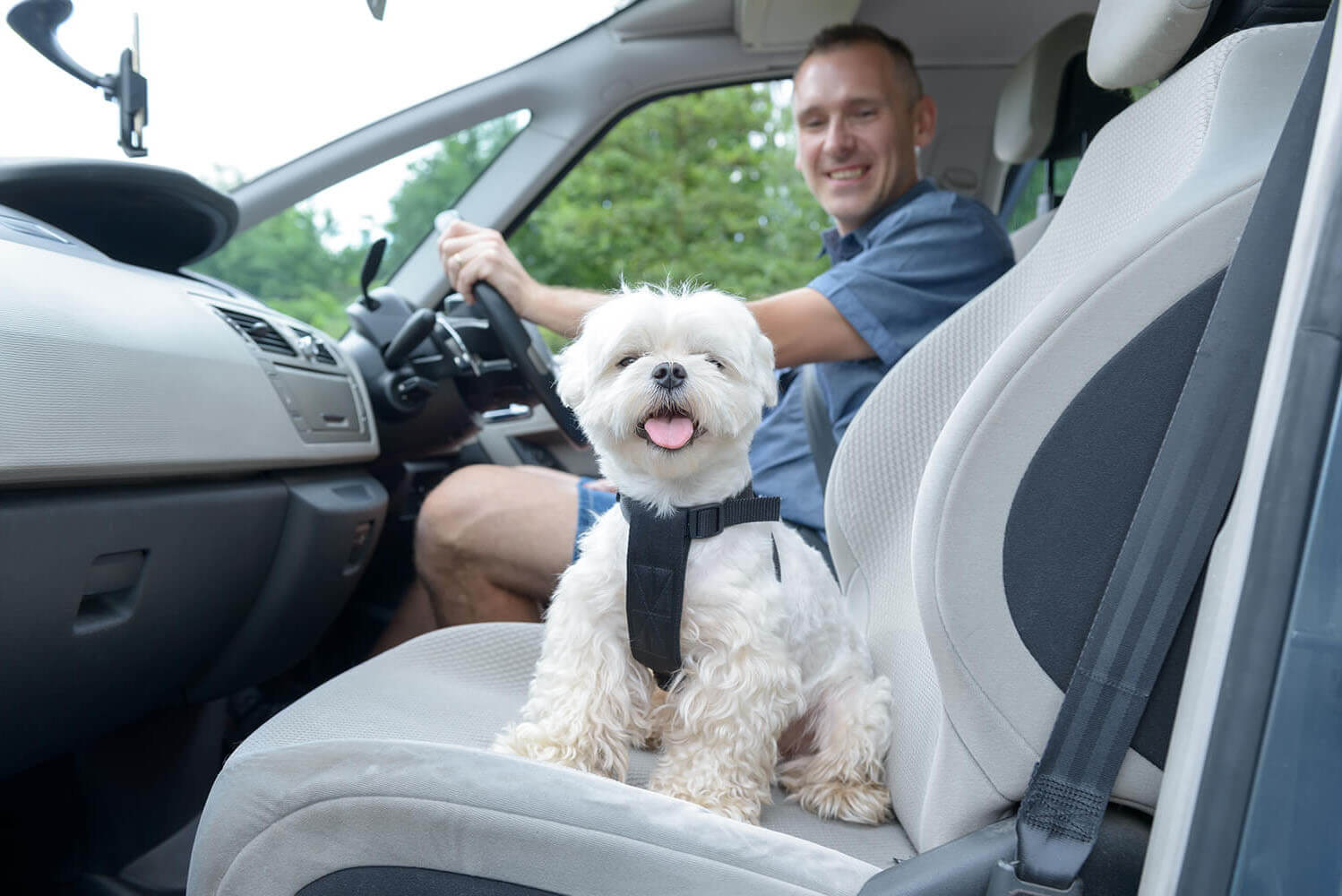There are occasions where you need to take your pet with you in the car – whether you’re going to visit family and can’t leave your dog behind, or you’re taking your cat to the vet. While there are no specific laws regarding the carrying of domestic pets in your car in the UK, there are safety requirements on how you transport your animals. By taking precautions you can reduce the risk of accidents and avoid a substantial fine.
Make sure you understand the dangers before taking pets in your car – and have a look at our simple tips to make it work:
The safety of your pets
While your pets are in your car you should ensure they’re strapped in, either by a seatbelt, dog cage, pet carrier or guard. By carefully restraining them you know they’re properly controlled during the journey – and protected if you need to brake suddenly.
One in five owners regularly travels with their dog in the passenger seat without restraining it. We recommend that your pets aren’t in the front passenger seat, as this can be dangerous if you have to make a sudden stop or turn a corner. If you choose to use a seat harness, make sure it’s secured to the seat belt attachment, fits properly, and is the appropriate size. If you don’t secure your pet with a safety restraint, not only can you endanger the lives of everyone in your car, but you can also face up to £5,000 in fines.
Distractions
Without restraining your pets in your car while you’re driving, you can risk the lives of the people in your car – and in other cars. New research revealed that a quarter of survey participants admitted to finding their pets a distraction, with a further 10% having to take their hands off the wheel to restrain their pet. In fact, 5% of survey participants confessed to taking selfies and playing with their dog while driving.
As pets can be a huge part of our lives, it’s unsurprising that we want to take them with us on holidays and long journeys. But the danger caused by a driver being distracted is something to be conscious of when bringing pets in your car. By leaving your pet unrestrained, greater harm can be caused to them if they’re loose in the car – particularly in the event of an accident.
The comfort of your pets
Safety is the most important concern when driving with your pets. By ensuring your pet is comfortable you can also reduce the number of distractions you may have to deal with while driving. Before getting into the car, make sure to feed your pet at least two hours before travelling, as they travel better on an empty stomach. This also helps with any travel sickness.
When caring for your pet throughout the journey, make sure you include regular exercise and toilet breaks – especially if it’s a long journey. Be sure to provide your pets with plenty of water in a spill-proof bowl and bring snacks in case you get stuck in traffic.
If your pet isn’t used to being in a car, put something that smells like you/your home in their carrier, or on the seat next to them, to help calm their nerves.
Driving with pets aka Driving Miss Daisy
Check out the infographic below for tips on keeping your pet happy while travelling in a car:

